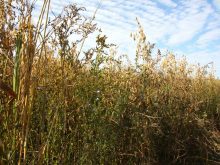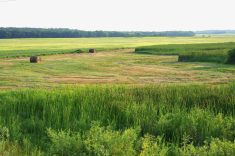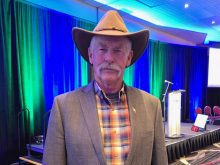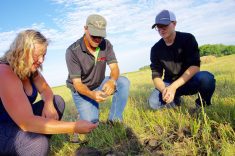There are easy starting points to build soil carbon. Getting them to make sense on the balance sheet is another matter.
That was one message heard by a panel of grain producers, livestock producers and production experts who gathered at the recent Manitoba Forage and Grassland Association regenerative agriculture conference in Brandon.
Why it matters: Switching to regenerative agricultural practices is not as easy or simple as it sounds, producers say.
Read Also
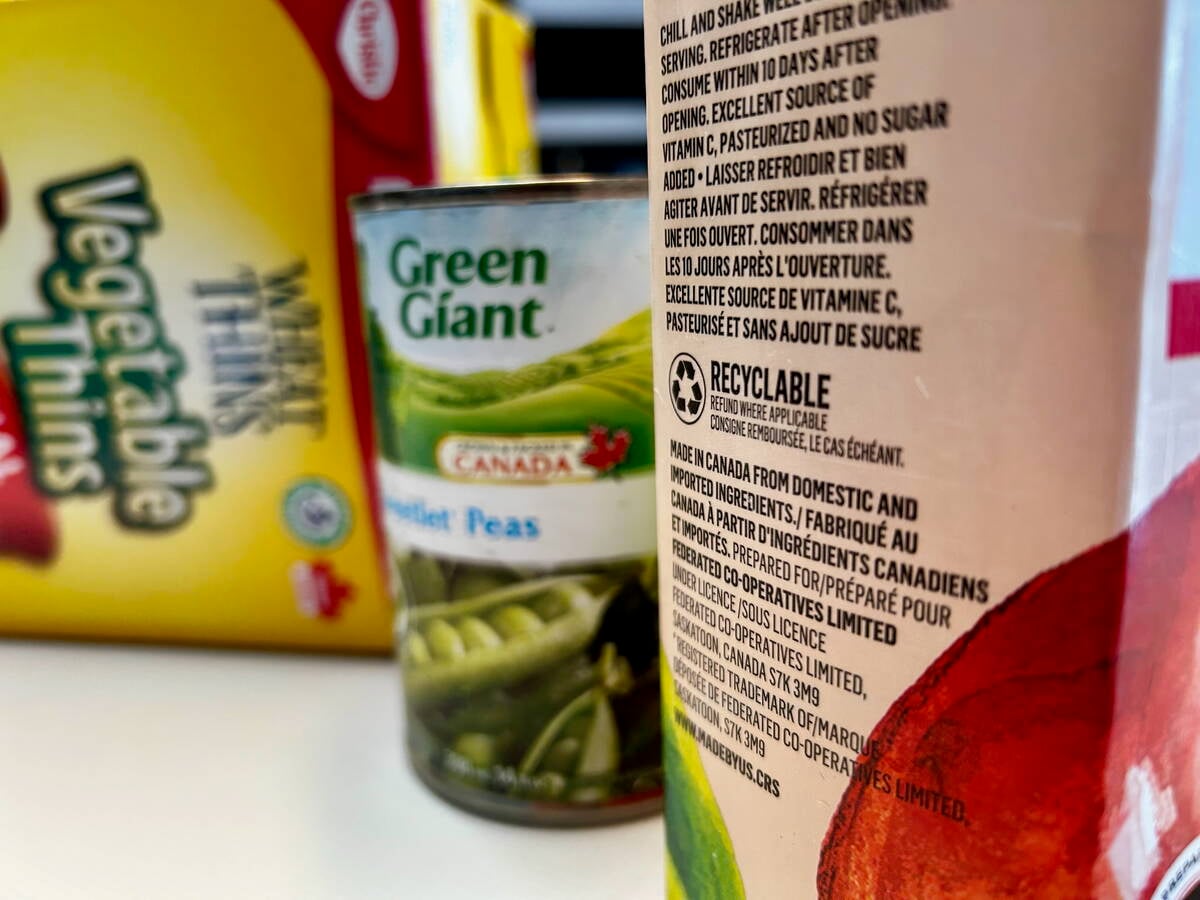
Unclear food labels hinder Canada’s ‘buy local’ surge
“Maple-washing” on Canadian food packaging makes label claims hard to keep straight and hurts both farmers and consumers trying to buy Canadian, economist says.
Regenerative agriculture basically involves integration of perennials, longer rotations, cover crops and rotational grazing. Keep the soil covered. Keep a growing root for as much of the season as possible.
[VIDEO] When cover crops and cattle meet
For all that cover crops promise, however, the practice is often hard to financially justify, according to David Rourke of Minto.
“They need to be part of the answer,” he said about cover crops, but their return on investment doesn’t entice.

There is funding meant to take the sting out of the economics. Management funds through Ag Action Manitoba, for example, include cost sharing options to establish a cover crop. Cover cropping, nitrogen management and rotational grazing also make the grade for funding under the Prairie Watersheds Climate Program, which has up to $40 million administered by the Manitoba Association of Watersheds.
[RELATED] Funding expands for regenerative agriculture
Even with funding, Rourke said he has yet to see farmers reap much financial return from the cover crop seed they’ve put in the ground.
It’s like asking the producer to “take $40 to $50 [per acre] out of your pocket and hope you get a return,” he told the room during the panel.
Rourke has done his round of production systems in the search for more sustainable farming. He was a long-time zero-till producer. He tried his hand at organic production for five years before moving away from the practice, unhappy with the amount of soil disturbance required. He briefly tried his hand at collaborating with a cattle producer to integrate grazing, although the experiment fell through.
Most recently, Rourke has started the process of completing his PhD, with a thesis on net positive farming when it comes to carbon. His farm is host to a long list of on-farm trials with that in mind.
Rourke said research is needed to address the logistical challenges of cover crops.
“Most of the opportunity for cover crops is in fall, in the shoulder season, so the years that you can actually get that in are dry years when the wear factor on your equipment is high and the probability of success is low,” he said. “And then there are the wet years like 2016. There was no chance of getting anything in, it was so wet. We need a new technology.”
[RELATED] Cover crop learning program seeks to provide community
The Minto-area farmer has floated the idea of delayed germination seed, which would allow cover crops and grain crops to be planted at the same time. This year, Rourke’s on-farm trials included an experiment on seed coatings in an effort to achieve that delay.
A delayed seed would have to give the producer at least 30 days, which would be long enough to get the germinated grain crop sprayed. Ideally, cover crop seed would germinate a week before grain harvest, he said.
In that scenario, producers would not have to take time away from harvest to seed cover crops, and would avoid the fallow period between grain harvest and when the fall-seeded cover crop sprouts.
His experiment achieved seven to nine days of delayed germination in the field, which was not nearly enough, but “the trials weren’t meant to be the answer. They were meant to stimulate discussion,” he said.
Crop options
Manitoba should have an advantage in crop options, according to Lori-Ann Kaminski, research manager with the Manitoba Crop Alliance. The province sits in a relative Goldilocks zone for prairie weather that should allow a variety of legumes and longer crop rotations better able to sequester carbon.
The other half of that equation is markets. The golden rotation option must not only build carbon but be marketable and profitable, she said.

It’s not as easy as “YouTube University” makes it look, said Ryan Boyd, panel moderator and mixed farmer near Forrest, Man.
“I always come back to, it’s got to be profitable,” he said. “I think long-term crop rotation is profitable and so is rotational grazing. Certainly there’s short-term economics pulling us in different directions, but I think you look at fertilizer prices [that] went up this spring. I think we saw more oats and legumes grown this year than we would have otherwise had there not been the cost associated with fertilizer.”
Cattle
Rourke doesn’t have cattle on his farm in southwestern Manitoba, but he does think livestock and the perennials associated with grazing are the simplest way to build soil carbon.
“If you think of the regenerative principles, perennials cover pretty much every one,” he said. “There’s cover, no disturbance, plants from snow to snow. Perennials are the answer. But the only thing that is really perennial is forages, so then you need something to eat them.”
The problem comes with the cost of doing business in cattle.
They are not a high profit option for the grain sector, as recently shown by elevated grain prices and the aftershocks of last year’s drought.
In an early fall interview with the Co-operator, Manitoba Agriculture Minister Derek Johnson estimated that cattle producers might see a profit margin of, on average, just 4.6 per cent.
Apart from putting more cattle on the landscape, anecdotal evidence suggests cattle producers are leaving the business.
The cattle sector saw higher prices leading up to and during this year’s fall run. In early fall, Manitoba Beef Producers president Tyler Fulton noted local calf prices were 30 to 50 cents a pound higher than in 2021, while auction marts reported top dollar for superior cattle and better cull cow and bull prices than in previous years.
Despite that, auction marts also reported a glut of bred cow and liquidation sales and Manitoba Beef Producers said there is continued exit from the sector.
As of July 2022, Statistics Canada reported 682,200 animals on cow-calf operations in Manitoba, compared to 712,500 the year before.
On a farm-by-farm level, cattle and cover crops often go hand in hand, noted Rourke. Livestock offer grazing and are an easier economic argument for those who already have herds.
However, many grain farmers don’t see livestock as a profitable option within their operations.
Mike Duguid, a director with the Manitoba Beef Producers and farmer near Arnes, Man., noted the reluctance of many grain producers to integrate livestock.
A large cross-section don’t want anything to do with livestock, he said, and it unlikely that large-scale livestock integration will become a trend in Western Canada.
He said grain production is much more likely to see widespread adoption of 4R nutrient management.
But Rourke is critical of the emphasis on 4R management, cover crops and rotational grazing as solutions for the ag sector.
“The government and other organizations are suggesting that it’s not that hard,” he said. “If we throw $35 dollars an acre at farmers, they’ll try it and they’ll be hooked and job done, but I don’t think it’s that easy.”




